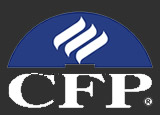June 1, 2022
Welcome to June and the beginning of summer in three weeks. Last month, when it was all said and done, there was a lot more said than done. The markets did their best impression of a wire with a weighty tightrope walker. The S&P 500 opened May at 4,130.61 and sagged to as low as 3,899.00 on May 19, and finally closed on May 31 at 4,132.15 for a monthly gain of 1.54 points, or .00037%.
Had you been listening to the financial “journalists,” you would be forgiven for being frightened out of your wits. As if on cue, they flipped through their Rolodex to “Perma-bears” and dialed up all the usual suspects. From Nouriel Roubini to Mohamed El-Erian, their stopped clock was finally correct. The market was going to crash. Or was it? The markets flirted with the bear, but it didn’t quite make it in the end. We squeaked under the wire at a negative 19% on May 19 and, as noted above, actually turned slightly positive by June 1.
Investopedia defines a bear market as “. . . a condition in which securities prices fall 20% or more from recent highs amid widespread pessimism and negative investor sentiment.”[i] Our last real Bear market was in March 2020, when the Covid Economic Lock-downs caused a 34% drop in the S&P. (It was short-lived—the year 2020 ended up 16%.)
We will not declare victory just yet; we are certainly not out of the woods, but let’s agree to recognize the slight relief felt when we had that comeback at the end of the month.
Every market decline of this magnitude has its causes. This year’s overall decline is about inflation due to; supply chain issues, Russia’s war on Ukraine, and too much fiscal stimulus. In my humble opinion, the fiscal stimulus was the main culprit. You cannot print trillions of dollars out of thin air and dump them onto the street without inflating prices.
Milton Friedman’s classic definition of inflation is “too much money chasing after too few goods.” And that sounds like a perfect description of our current problem. In our Loyola classes, we jokingly noticed that according to economists, in the end, everything comes down to the supply and demand curve. Too much demand or too little supply, and you get scarcity. Scarcity means higher prices. True enough, this last year or so, we have too little supply of certain things, but we have had extraordinary demand for everything. Just ask your USPS carrier how many boxes from Amazon, Chewy, or eBay they’ve delivered today.
The cure for high prices is to slow the demand and/or increase supply. The Federal Reserve is finally trying to slow demand by raising the costs of borrowing (interest rates) and reducing the money supply (They currently have a record $7.2 Trillion balance sheet!)[ii] Their tactics take time—the largest economy in the history of humans–cannot turn on a dime. It seems, however, that the demand flood might be starting to ebb. Retail sales in May were disappointing, and housing sales were lower than in prior months.
For the Fed, it is a battle to reduce inflation while preventing a recession. An old maxim for the Fed is that they must take the punch bowl from the party at exactly the right time. I’ve been to parties where the punch bowl remained open for too long. It is not pretty. I’ve been to dry parties too—they’re not as fun, but they are not as messy either. If you hear someone say that the Fed is behind the curve—which I think they are—translate that to, they left that darn punch bowl out too long.
If we had a choice (and we do not), I would take a recession over runaway inflation any day. Recessions are temporary and sometimes even necessary, but inflation is cumulative and compounding. Compounding is as much a math miracle for investments as it’s a superstorm for prices.
Now, inflation or recession is not an either-or question; there’s no rule against having both. This situation is referred to as stagflation; you will, I’m sure, hear that from the doom-and-gloom pundits soon enough. Stagflation, the word was coined in the late 70s and 80s. Remember the “WIN” buttons from President Jimmy Carter’s era? (WIN stood for Whip Inflation Now.) Even as challenging as that market was, once investors thought inflation had slowed, the S&P 500 more than tripled from August 1982 to August 1987.)
Short-term bear markets, recessions, or simply market dips mean nothing to long-term investors like us. We do not panic sell. Instead, these are all buying opportunities—whether for you or your heirs. When things go on sale, we buy! Remember, while the past is not a predictor of future returns, it is the only valid data we have. The actuals mean far more to me than the hypotheticals, and the actuals have never gone down for any significant time. From March 2009 to the end of 2021, the S&P 500 produced an average annual compound return of 17.5%. This 17.5% is the actual record, the historical record, and history is easily known.
As a warning, another thing we know is that we cannot time the market; we have no idea where it will be six months or even a year from now. There is no shame in this lack of knowledge since nobody else knows either.
When people use the term “the market,” or “S&P 500”, know that they mean it is a market that auctions the stocks of the 500[iii] most prominent and best companies in the history of the world. And regardless of the short-term nature of their financial reporting, they will innovate and adapt to any economic state. They will earn their profits while delivering goods and services that the public wants and needs. And when they make a profit, they will return a good portion of it to the shareholders. We want to be those shareholders.
Thanks again for reading. If you want to do some quick calculations about the S&P 500 (like I did in the last few paragraphs), check out this link https://dqydj.com/sp-500-return-calculator/ Ironically, its methodology was designed by Nobel laureate Robert Shiller, someone I always think of as a perma-bear.
Please call us if you want to meet and go over your accounts, plans, thoughts about money—or even the weather. MK
[i] https://www.investopedia.com/terms/b/bearmarket.asp
[ii] https://www.federalreserve.gov/releases/h41/current/
[iii] Actually the number is 504 companies—but the S&P504 sounds silly.


